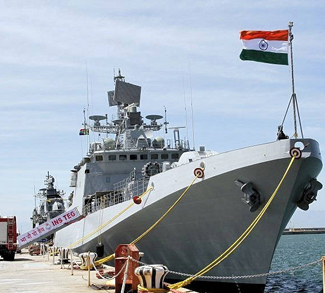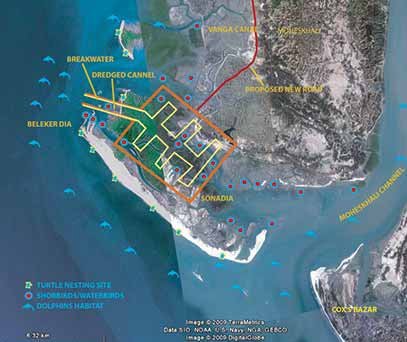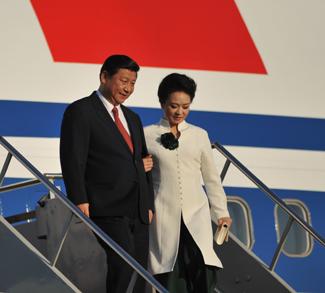The recent participation of Japanese warships JS Izumo and JS Sazanami in the trilateral Malabar 2017 naval exercises (along with the Indian and US navies) marks the beginning of a new phase in Japan’s maritime power projection. It was the first time that the JS Izumo participated in an exercise with foreign navies. Japan became a permanent member of the Malabar exercises in 2015, though its original involvement can be traced back to 2007. Incidentally, the Malabar naval exercises have been taking place since 1992 as bilateral exercises between India and the United States.
The 24000-ton JS Izumo had been sent out on its maiden deployment to Singapore, the Philippines, and Indonesia before joining the India-US-Japan Malabar naval exercises, held in the Bay of Bengal. Thereafter, the JS Izumo and the JS Sazanami have also visited Sri Lanka.
So, what does Malabar 2017 mean for Japan?
Firstly, the exercises come against the backdrop of China’s increasingly aggressive actions around Japanese territorial waters, especially around the Senkaku Islands. In a sign of this increasing brazenness, after a recent flight of PLAAF bombers through the Miyako Strait, Beijing advised Tokyo that “they will feel better after getting used to such drills.” In addition, recently, and on many occasions, North Korean missiles have landed within Japanese territorial waters.
Secondly, this also means that the cooperation between Japan and India in the maritime arena is slated for a quantum leap. It was in August 2007, during the first term of the PM Shinzo Abe, when the prime minister outlined that “the Pacific and Indian Oceans are now bringing about a dynamic coupling as seas of freedom and prosperity” in his landmark speech before the Indian Parliament, titled “Confluence of the two Seas.” Since then, the situation in the region has changed significantly and the term Indo-Pacific is gaining increasing currency.
Thirdly, the Japanese Self-Defence Forces already have a base in Djibouti and India’s location would be key to logistically supporting the base. Apart from this, Japan and India are also negotiating for the supply of Japan-made US-2 maritime reconnaissance aircraft to India, thereby opening up a whole new area of cooperation between the two countries.
Fourthly, India’s growing ties with the U.S. have also contributed to the improvement in India-Japan ties, especially given the fact that Japan and the U.S. are close allies. At the same time, given that India is increasingly buying US-made weaponry, there is increasing interoperability between the armed forces of the three countries. For example, India now operates US-made P8I maritime patrol aircraft.
Fifthly, for Japan too, freedom of navigation in the Indo-Pacific region is key to maintaining the health of its economy. Prime Minister’s Abe’s “Free and Open Indo-Pacific Strategy” is in sync with India’s strategy of keeping its primacy intact in the Indian Ocean region. It is worth mentioning here that the first batch of Chinese soldiers have recently set sail to set up Beijing’s first military base overseas, in Djibouti, which may house up to 10, 000 soldiers. In addition, China’s so-called “string of pearls” strategy of helping set up ports in Pakistan, Sri Lanka, and Bangladesh – all in India’s immediate neighbourhood – has also raised concerns in India.
When PM Modi and PM Abe met for their annual bilateral summit in November 2016, they “reiterated their commitment to respecting freedom of navigation and overflight, and unimpeded lawful commerce, based on the principles of international law, as reflected notably in the United Nations Convention on the Law of the Sea (UNCLOS),” in a not-so-veiled reference to China’s assertive actions, especially with regards to the South China Sea dispute.
Japan and India have been getting increasingly closer in other areas too. Recently, the “India-Japan Agreement for Cooperation in the Peaceful Uses of Nuclear Energy” entered into force. This marks a giant step, especially for Japan, which is the only country to have suffered from atomic bombings. The fact that New Delhi is not a signatory to the Nuclear Non-Proliferation Treaty (NPT) and the Comprehensive Test Ban Treaty (CTBT) only goes to show the extra mile that Tokyo has walked in order to make this deal possible.
The Malabar exercises have already set the stage for the visit of the Japanese PM to India sometime in September of this year. During the proposed visit of PM Abe to India, there are also chances of a maritime security pact being signed between India and Japan. It is therefore obvious that Japan and India’s joint participation in the Malabar 2017 naval exercises (along with the U.S.) can only be seen as a harbinger of bigger things to come in the arena of maritime cooperation.




